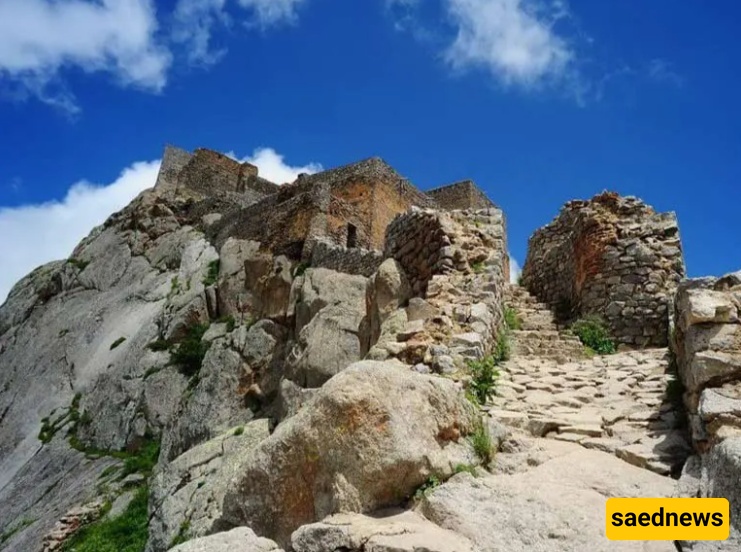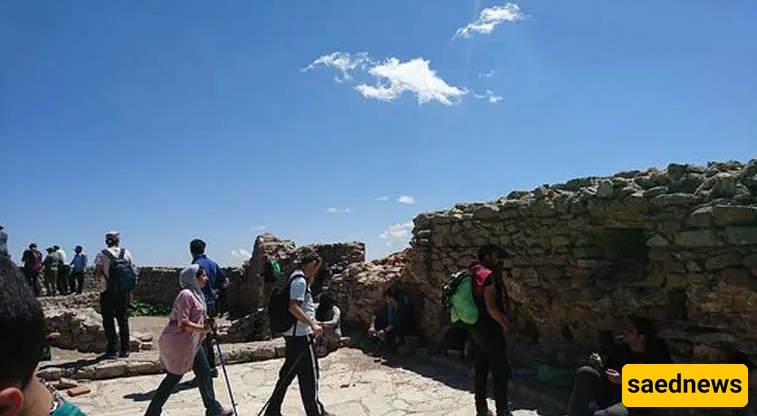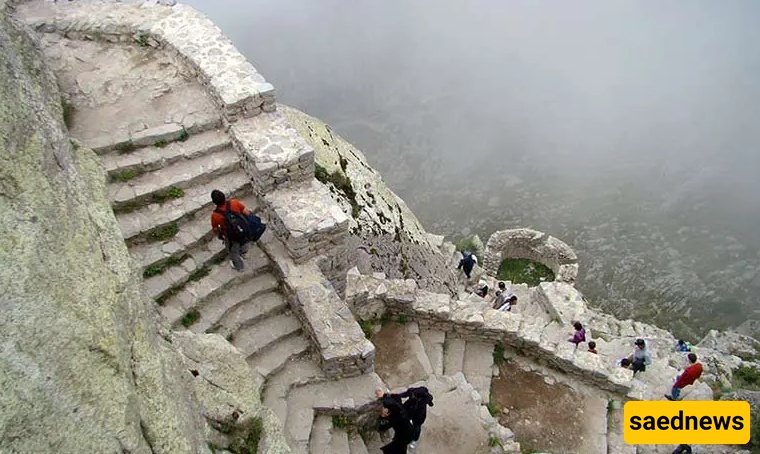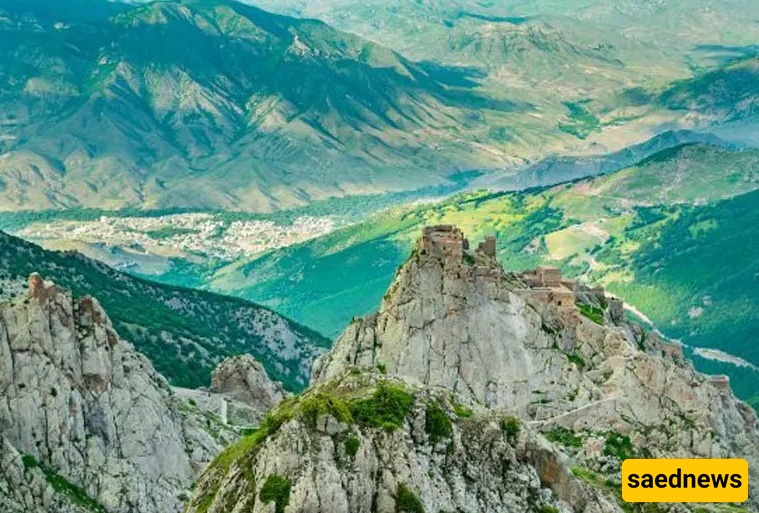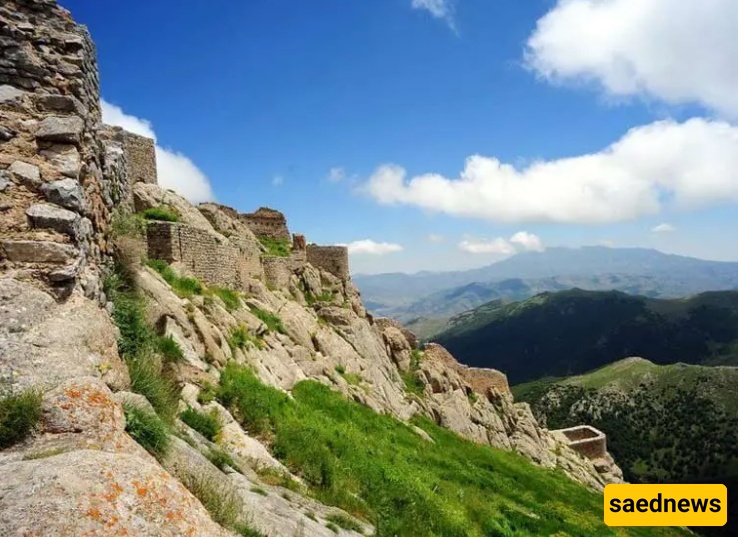SAEDNEWS: Babak Castle, also known as "Jomhur Castle," is located in the Qaradagh Mountains in northwestern Iran. It served as the stronghold of the rebel Babak Khorramdin against the Abbasids in the 3rd century AH. Renowned for its fortified position and natural beauty, the castle stands out as a prominent historical and tourist destination.
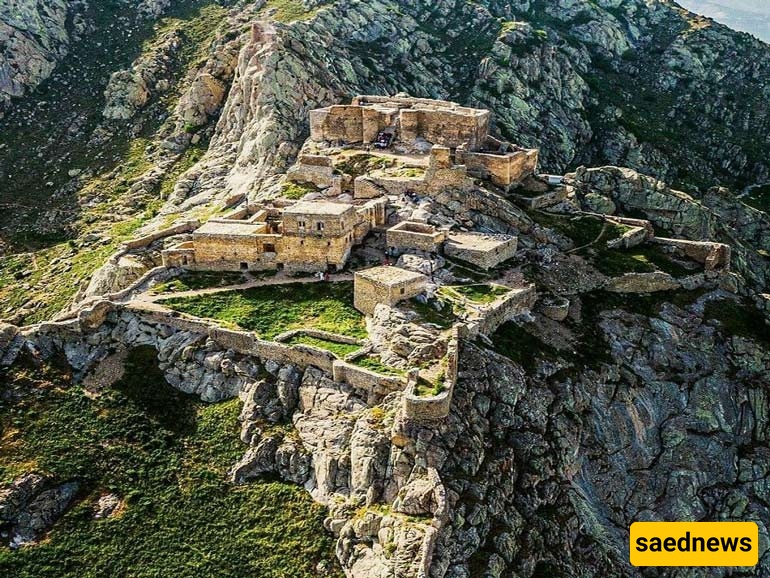
Babak Khorramdin Castle is one of the most prominent tourist landmarks in East Azerbaijan Province and among the most famous historical castles in Iran. The castle holds many stories, making it a preferred destination for history enthusiasts. Located in the Arasbaran region, Babak Khorramdin, one of Iran’s most renowned leaders, lived there for twenty years.
During these two decades, Babak Khorramdin, with the help of his companions and benefiting from the fortress’s strong defenses and strategic location, was able to outwit Arab armies in the mountains and launch surprise attacks against them.
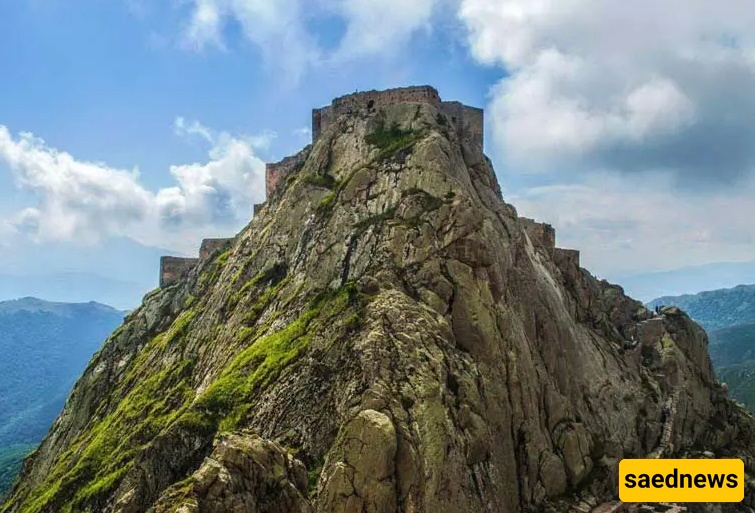
Babak Castle, also known as "Dezh Babak" or "Jomhoor Castle," is one of the most important tourist landmarks in the city of Kalibar, East Azerbaijan Province. One of the castle’s most notable features is the presence of deep valleys surrounding it, ranging in depth from 400 to 600 meters, which gives the fortress a fortified character as if nestled within nature itself.
Among the main attractions of Babak Castle is the expansive view it offers of the surrounding areas. This open horizon made it an ideal site for observation and defense. Although reaching the castle can be somewhat challenging, all the effort is forgotten once you arrive; the breathtaking scenery will captivate you, and, like me, you may find yourself standing in awe for several minutes, mesmerized by its enchanting beauty.
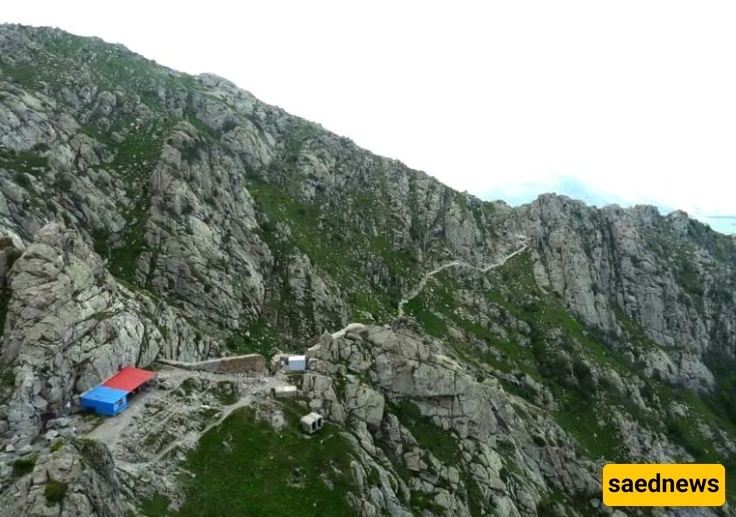
After your soul has been nourished by the beauty of the view, approach the castle via the path leading to its entrance, and you will see how small you appear beside the towering Babak Castle. Kalibar is about 3 kilometers away from the castle, and the road leading to it is difficult and exhausting. However, anyone eager to reach new heights of beauty must endure the hardship of the journey.
Babak Castle consists of three floors located immediately after the main entrance. After passing through the large hall, you will see seven rooms distributed around it, all opening into the castle’s central hall. On the eastern side of the fortress, you can observe additional rooms and water reservoirs. The ceilings of these reservoirs are designed in the shape of semicircular (cradle-shaped) or pointed vaults, constructed with "sarooj," a water-resistant material that prevents leakage. During autumn and winter, these reservoirs fill with rain and snow water, forming an essential water source during the summer months. In the event of a siege, these reservoirs would serve as the primary water supply for the castle’s inhabitants.
In the northwest part of the castle, there used to be connected stone stairs, but today they are mostly ruined, with only small portions protruding from the soil remaining. From these remnants, it is possible to understand that this location once housed rocky stairs. These remaining parts of the stairs currently serve as the only way to access the upper sections of the castle.
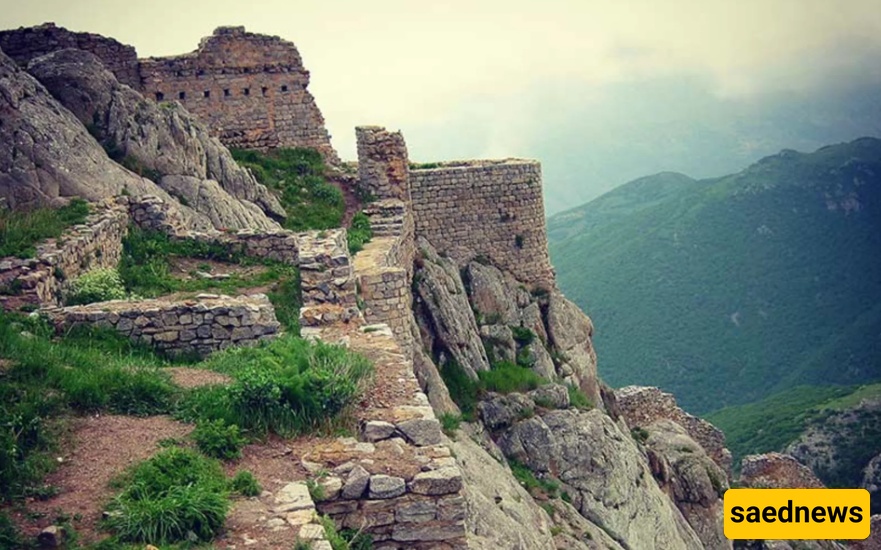
Among the archaeological discoveries at Babak Castle were decorated pottery shards. Based on the engravings and decorations on these pieces, some experts have hypothesized that the castle was inhabited during the 6th and 7th centuries AD. Copper coins were also found inside the castle; however, due to the passage of time and their deterioration, the inscriptions on them could not be read, making it impossible to determine the exact historical period to which the castle belongs.
Precise information about the construction date of Babak Castle in the pre-Islamic era is not available. However, it is believed that a group of inhabitants from the southwestern coast of the Caspian Sea lived in this region during the Achaemenid era. Some researchers suggest that these people were Talish tribes who were engaged in conflicts with the Achaemenids for a period of time.
It is likely that Babak Castle was built during the Sassanian or Parthian (Arsacid) periods. Some scholars base this estimate on the architectural style, which shows a notable resemblance to the Sassanian complex of Takht-e Soleyman. Nevertheless, it cannot be conclusively confirmed whether the construction dates back to either of these two periods. Given that the castle served as a defensive fortress, some researchers believe its history likely dates back to the Parthian era.
During the 8th and 9th centuries AH (2nd and 3rd centuries Hijri), Babak Castle was restored and underwent modifications in some of its parts. The effects of these renovations, carried out during the era of Babak Khorrami, remain evident even today, more than 1,200 years later.
The original purpose behind the construction of the castle and the reason for hiding some of the coins within it remain shrouded in mystery. One notable aspect of the castle’s history is the ingenuity of the engineer who selected its location: it was built in a position that made it nearly impregnable, even to large armies numbering up to 100,000 soldiers.
The difficult terrain, the castle’s elevation, and the presence of deep surrounding valleys made it a formidable fortress that required minimal effort to defend. These challenging geographical features caused many enemies to lose troops while attempting to approach it. Moreover, attacking forces could not easily get close to the castle and were forced to shoot arrows from great distances, which failed to reach the castle walls due to the vast space between them.
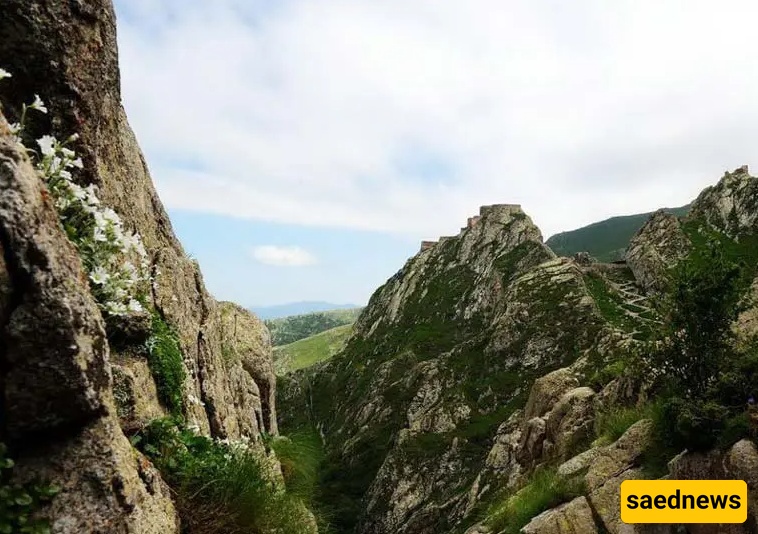
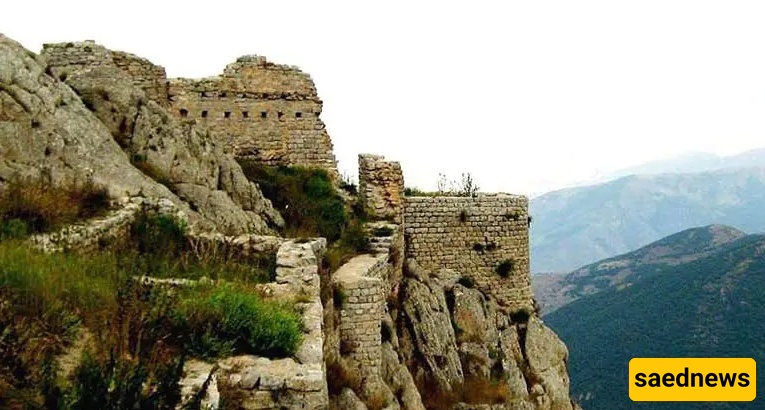
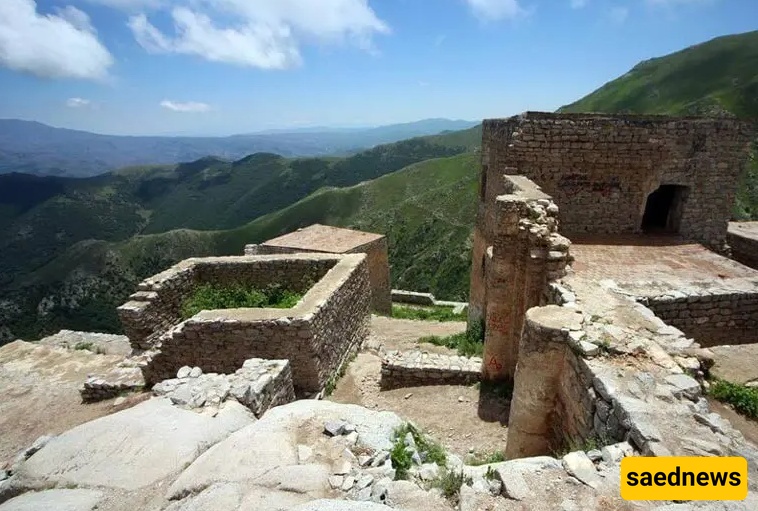
Many legends and stories surround Babak Khorrami; however, these narratives are often tainted with bias and hostility. This is primarily because Babak Khorrami fought against the Arabs and inflicted several defeats upon them. Consequently, Muslim historians did their utmost to fabricate strange and exaggerated tales to tarnish his image. These writers deliberately portrayed Babak in a negative and rejected light.
Babak Khorrami’s movement enjoyed popular support among the general public, but interestingly, he did not have supporters among the peasants and the elite. This aversion is attributed to Babak’s efforts to revive the Mazdakite faith—a belief system that was not accepted by Muslims, who considered it dangerous and unacceptable. They therefore exerted every effort to discredit him through fictitious and far-fetched stories.
One story told about Babak dates back to his childhood: it is said that his mother went out looking for him after he had taken the neighbors’ cattle to pasture. When she found him, he was asleep under a tree, naked, with blood dripping from the hair on his chest. However, when Babak woke up, there was no trace of blood on his chest.
Other legends claim that during his twenty years of rebellion, Babak Khorrami killed five hundred thousand commanders, and that the number of Muslims killed by Babak and his followers reached one million! Another story tells of one of Babak’s executioners who was captured; when asked how many people he had killed, he replied that he had slain thirty-six thousand Muslims.
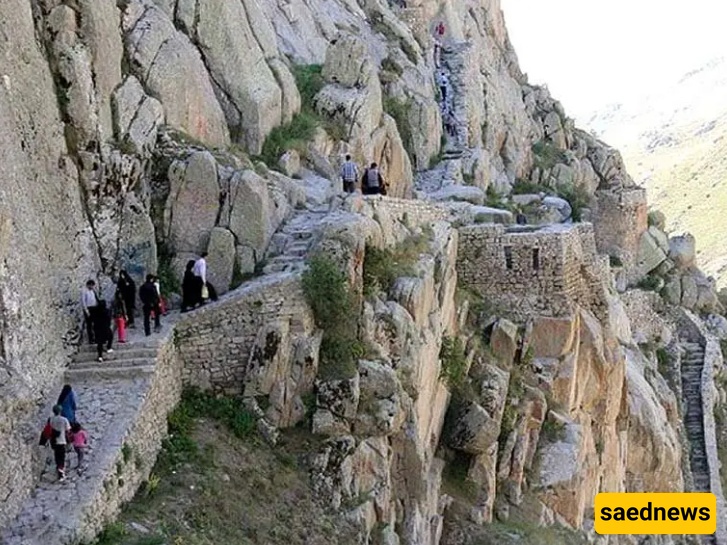
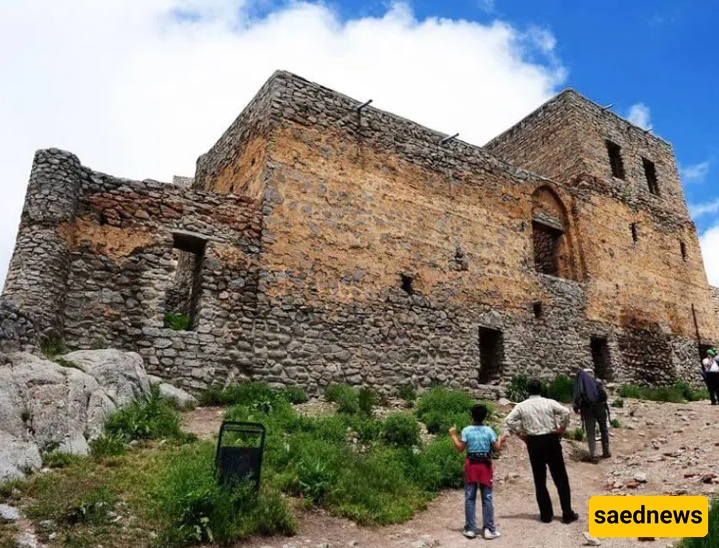
Babak Castle consists of three floors, each with its own distinct sections. Below, I will describe these sections to give you a better understanding of Babak Castle, one of the most prominent tourist landmarks in East Azerbaijan Province and the city of Kaleybar.
The Gate and Main Entrance
There is only one way to enter Babak Castle, which is through the main gate. After passing through the gate and walls, you reach a narrow corridor about 100 meters long and sloped. Beyond this corridor lies the main entrance to the castle. The castle building is situated directly after this entrance. The path inside contains many stairs, but they are extremely narrow, allowing only one person to pass through at a time.
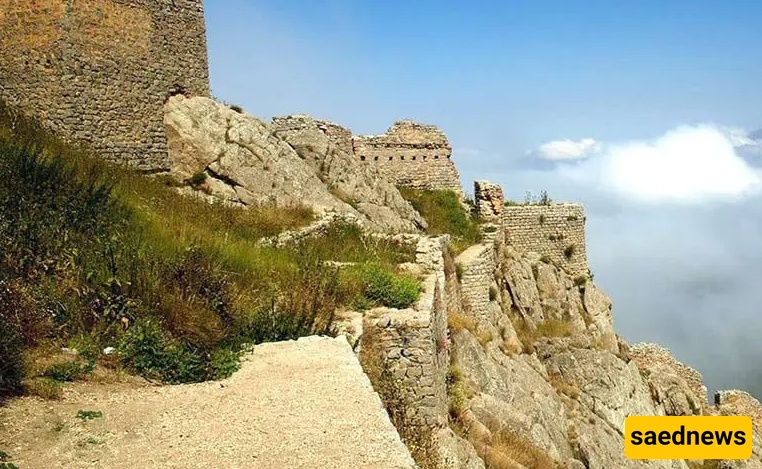
Towers and Guard Columns
On all four sides of the castle, there are towers and walls designated for guarding. Because of this, the castle enjoyed a wide panoramic view of the surrounding area, allowing any guard stationed in any direction to monitor vast expanses due to the castle’s height. This was one of the reasons the castle remained secure from enemy raids over time, thanks to its high capabilities in surveillance and monitoring.
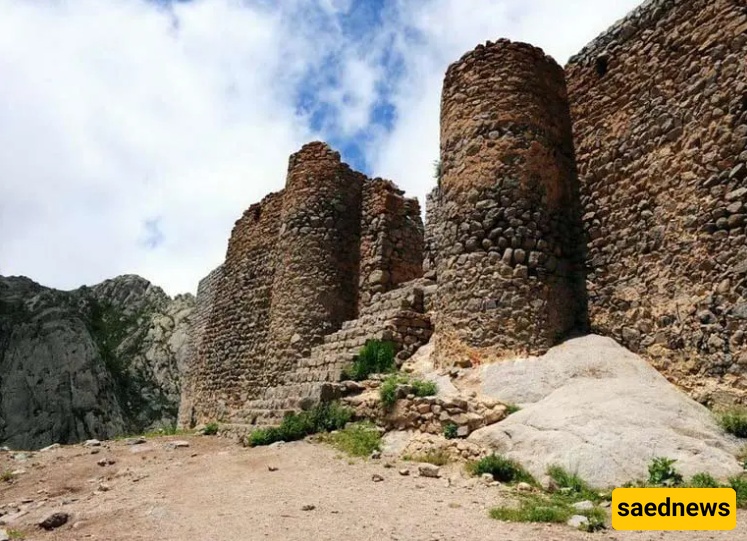
The Main Hall
I searched extensively to find precise information about the main hall inside Babak Castle to share with you. However, all available sources mention only that there is a hall surrounded by seven rooms, as if loyal soldiers or guards encircle the hall to protect it. The main hall connects to all these rooms, and from the hall, one can enter any of them.
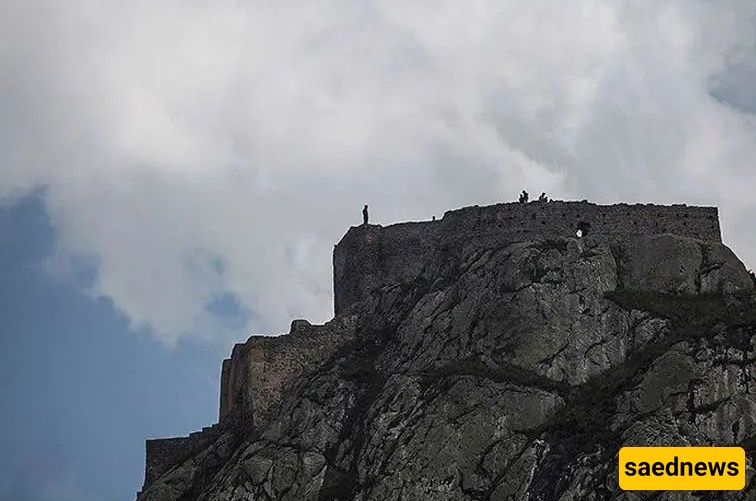
Water Reservoirs (Cisterns)
On the eastern side of the castle, there are several water reservoirs featuring distinctive architectural design. These reservoirs were constructed using a material known as “Sarooj,” a durable mixture used for waterproofing. Their roofs are shaped as semi-circular domes or vaulted arches, providing a strong and sturdy structure. Rainwater and snow collected during the autumn and winter seasons were stored in these reservoirs for use during the summer or in times of siege.
Castle Stairs
Most of the castle’s stairs have disappeared, with only small portions still visible beneath the soil. These remaining fragments are currently the only way to ascend to the upper parts of the castle. It is worth noting that during winter, the stairs become slippery due to cold weather and snowfall, so extreme caution is advised when using them.
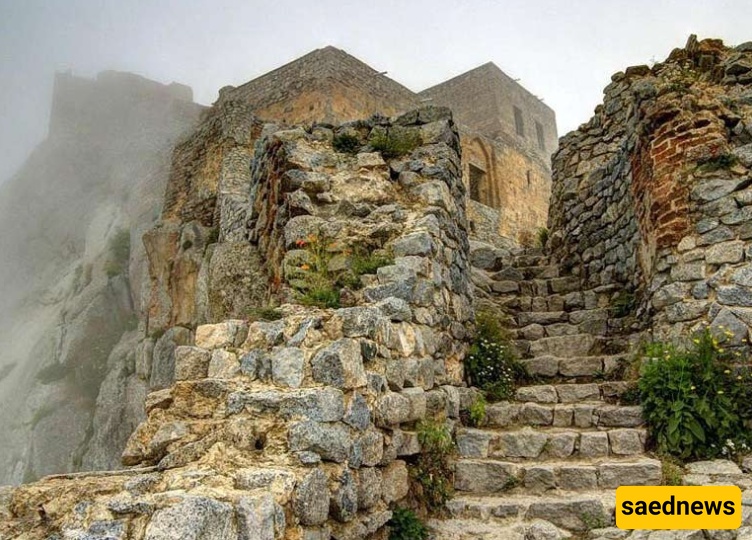
Babak Castle was constructed in such a way that it has only one main entrance. This entrance was guarded by sentinels who would climb the watchtower to monitor any suspicious movement or approaching threats from a distance. The fortress was built atop a high mountain surrounded by deep valleys, ranging in depth from 400 to 600 meters, making access from any direction other than the main gate virtually impossible. For this reason, it is often said that the castle’s designer was a clever and strategic thinker.
Reaching the castle was so difficult and exhausting that some enemies would be defeated or depleted before even arriving. Those who did manage to come closer were met with a barrage of arrows launched from within the fortress. In short, the person who built the castle clearly understood how to create an impenetrable refuge that was hard to access.
On each of the four sides of the castle, specifically at the natural supports formed by the mountain’s rock walls, there are four cylindrical watchtowers. The elevation of the castle and the strategic positioning of these towers provided guards with a wide and comprehensive field of vision, enabling them to monitor movements several kilometers away.
Various materials were used in the construction and restoration of Babak Castle, including stone, brick, "Sarooj" (a water-resistant type of mortar), and wood. One of the most notable architectural features of the castle is that it consists of three floors. Thanks to the stone staircases, each level is easily accessible, with different rooms located on each floor. In terms of durability and strength, the castle has proven its resilience, as it still stands today more than a thousand years after its construction.
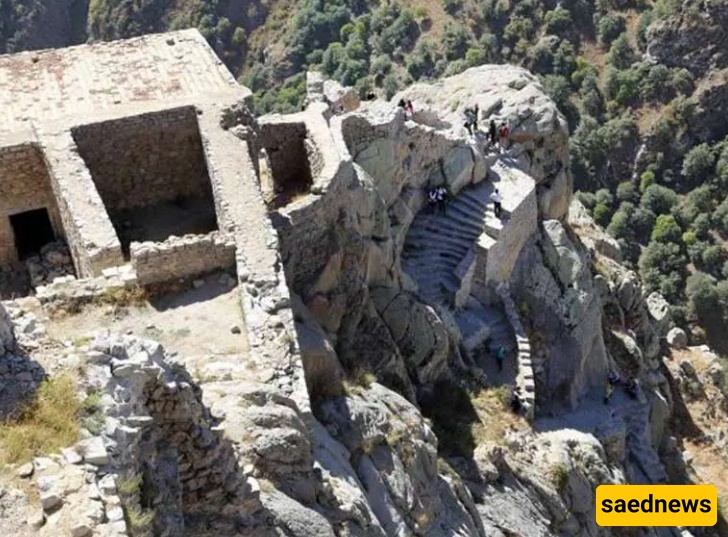
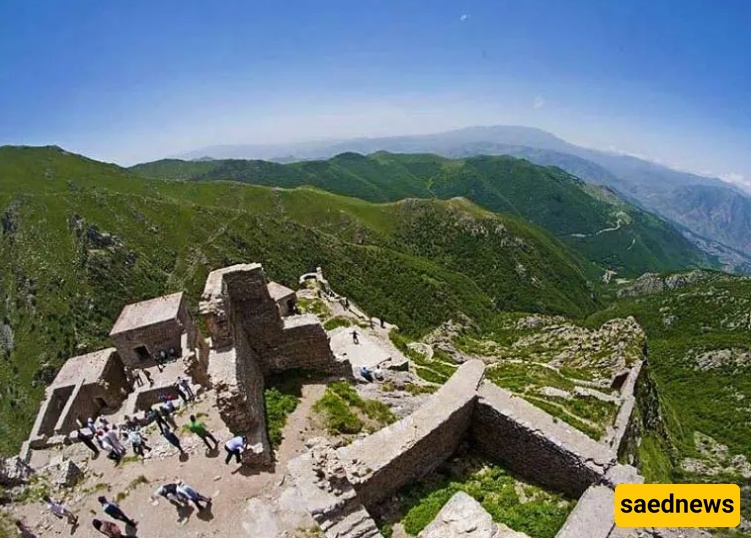
Reaching Babak Castle is no easy task, so it’s highly recommended to wear proper athletic or mountain climbing shoes. The castle is located far from residential areas, making it essential to bring some food and water with you.
If you plan to visit during the winter, be aware that the weather can be extremely cold—cold enough to numb your fingers and turn your face into an icy block. Therefore, pack warm clothing, preferably lightweight and non-restrictive to allow for ease of movement.
Situated in a mountainous region, Babak Castle experiences very cold nights. If you intend to spend the night near the castle, be sure to bring a suitable tent and warm clothing.
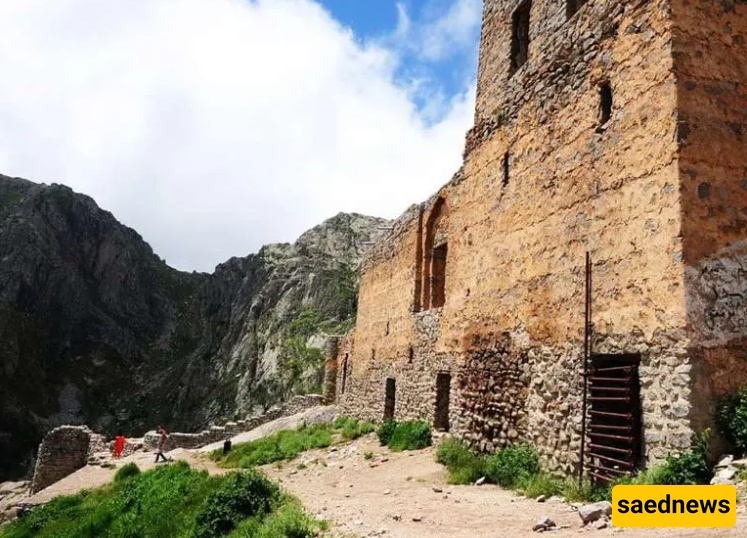
There are very limited facilities available at the base camp where the hiking trail to the castle begins. These include a small shop, a campsite, drinking water, and a restroom.
Babak Castle is located in a mountainous region known for its harsh, snow-filled winters. Therefore, the best time to visit is during the summer. However, due to the difficulty and irregularity of the trail, it’s important that the weather not be too hot, to avoid heatstroke.
If you're looking for pleasant and mild weather, it’s recommended to visit between April and early June, or from September to October.
Spring (April to June) and autumn (September to October) are the most popular seasons for visiting the castle, attracting the highest number of tourists. But if, like me, you prefer to avoid crowds, consider visiting in early autumn before temperatures drop too much.
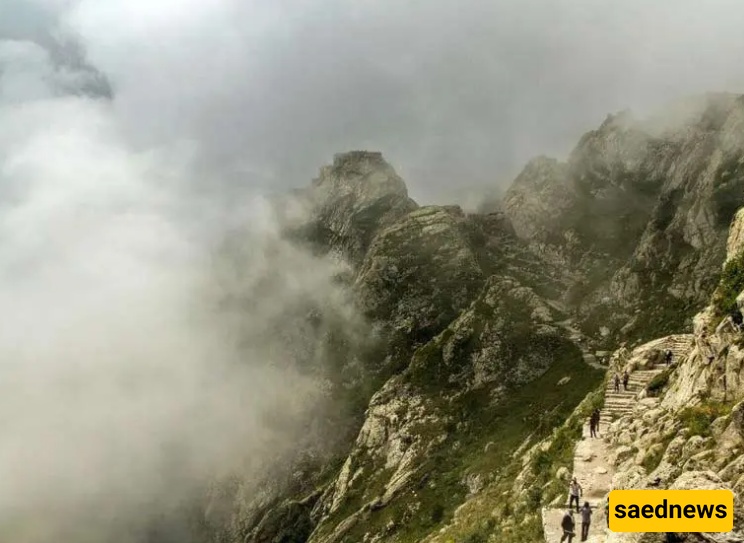
Babak Castle is situated in East Azerbaijan Province, in the Kaleybar region, approximately 3 kilometers from the town of Kaleybar.
There are three routes to reach Babak Castle; however, the best one is the trail that passes through the nearby base camp. You can drive to the camp by car, and then hike to reach the main stairway leading up to the castle.
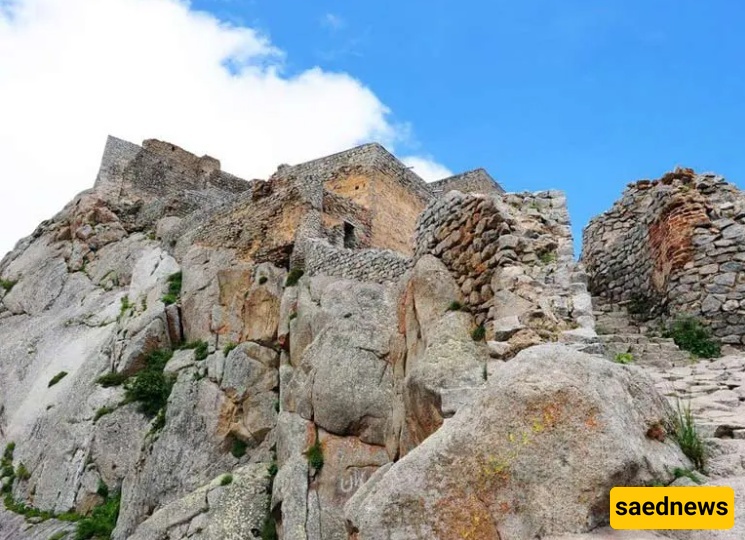
There are three main routes leading to Babak Castle, all of which converge at the start of the castle’s main stairway.
Route 1:
The tourist camp at Qaleh Darehsi, located 3 kilometers from Kaleybar, is one of the primary access routes. You can drive from Kaleybar to this camp, which is near the castle. From there, you must continue on foot. Upon reaching the main stairway, you’ll need to climb the stairs to reach the castle.
Route 2:
A common and permanent route to the castle starts from the direction of Babak Hotel. This route requires climbing 1,000 stone steps to reach the castle’s main stairway. The hike takes approximately three hours on foot.
Route 3:
In the third route, you drive from Kaleybar toward Babak Hotel. Six kilometers past the hotel, turn right onto a secondary road. This road features multiple ascents and descents, so a four-wheel-drive vehicle is recommended. Once you reach the herders’ camp, you will need to walk for about one hour to get to the castle’s main stairway.
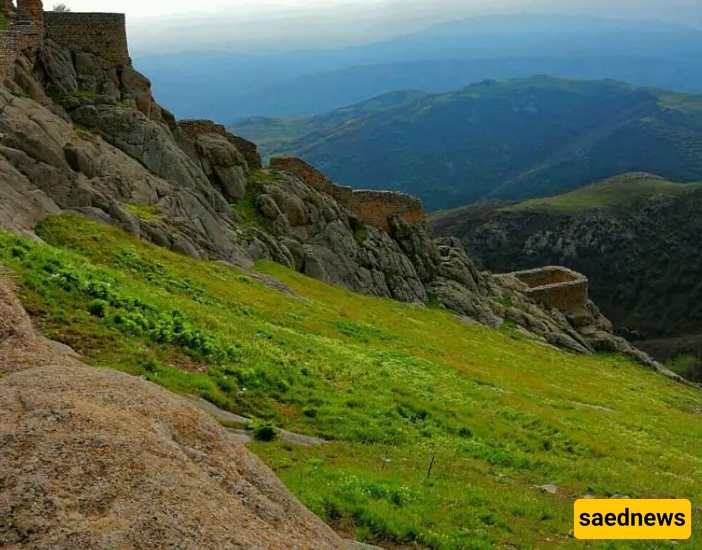
Now that we’ve all enjoyed the journey to Babak Castle up to this point, I must say that the part of the story I loved most was when Babak Khorramdin, accompanied by only 20 of his comrades, was able to repel Arab attacks and launch surprise assaults from time to time. This castle, despite its beauty, possesses a certain ruggedness and firmness that captivates you at first glance.
As for the road leading to the castle, I can hardly describe just how beautiful it is, for “hearing is not like seeing.” This castle sparkles like a precious gem atop the highlands of Arasbaran, and it stands as one of the most important tourist attractions in Kaleybar.
If this article has stirred in you a desire to travel, it’s no surprise—I've only shared a small part of the castle’s allure that can be put into words. So, if what we’ve read together has sparked your curiosity, you must see for yourself how magnificent this castle truly is.
If you do visit Babak Castle, write about your experience—I’m eager to hear the news of your joy.
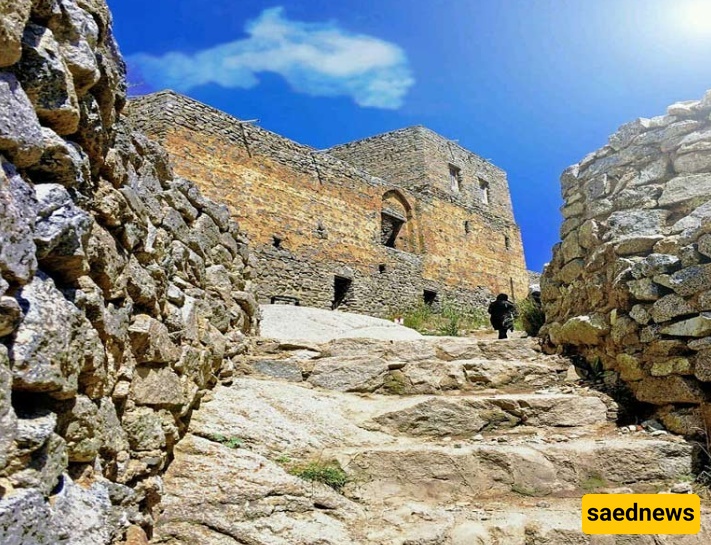
Below, we will explore together a selection of images showcasing this beautiful castle.
